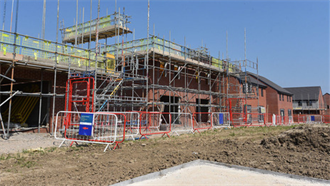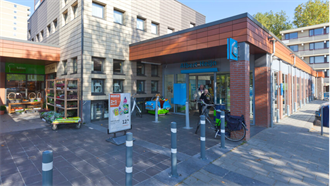A lack of office supply will be the main driver of above-average rental growth in European hotspots including Amsterdam, Stuttgart and Prague in the next two years, according to a new report from JLL.
JLL names Amsterdam, Stuttgart and Prague as office rental growth hotspots
- In Research
- 11:41, 31 May 2018
- By Virna Asara
Events
Latest news
-

Thank you for 18+ years!
- Editor's Letter
- 24-Dec-2024 11:00
-

Nrep picks up iconic Copenhagen property
- Living Watch
- 23-Dec-2024 11:43
-

Microsoft completes deal for Leeds data centre plot
- Alternatives Watch
- 23-Dec-2024 11:36
-

NBIM snaps up 80% stake in Trinity office tower
- Office Watch
- 23-Dec-2024 10:26
-

Indurent gets green light for Staffordshire shed
- Logistics Watch
- 23-Dec-2024 10:14
-

Global Holdings Group acquires London mixed-use scheme
- Office Watch
- 23-Dec-2024 10:09
-

Investis expands Swiss resi portfolio with €149m acquisition
- Living Watch
- 20-Dec-2024 17:43
-

Greystar enters Irish PBSA market with €150m acquisition
- Alternatives Watch
- 20-Dec-2024 17:19
-

-

Kojamo secures €150m loan from SMBC Bank
- Finance Watch
- 20-Dec-2024 13:18
-

Deka snaps up Paris office building for €89m
- Office Watch
- 20-Dec-2024 13:05
-

-

-

Covivio purchases hotel in Tenerife for €81m
- Alternatives Watch
- 20-Dec-2024 11:41
-

Approval granted for €2b Lisbon mixed-use redevelopment
- Living Watch
- 20-Dec-2024 11:40
-

Public Property Invest acquires office building in Norway
- Office Watch
- 20-Dec-2024 09:41
-

Investika and Bud Holdings buy five logistics parks in Poland
- Logistics Watch
- 20-Dec-2024 08:50
-

-

Maslow Capital provides €90m loan for Basildon BTR
- Living Watch
- 19-Dec-2024 12:46
-

CDC snaps up Paris office from Deka
- Office Watch
- 19-Dec-2024 12:38
-

Homes England, Oaktree and Greycoat set up €301m UK housing JV
-

Aareal Bank provides €368m for prime logistics in Poland and Germany
-

M&G expands living exposure in Southern Europe with €126m spree
-

Investors hope to 'thrive in 2025' in new year predictions
-

Cibus confirms talks to acquire Benelux supermarket portfolio

About PropertyEU
Who are we? PropertyEU was established in 2006 as a truly pan-European information source for real estate professionals. We provide in-depth news, data and analysis of Europe's property markets at a time of increasing cross-border investment, development and financing across the continent and beyond.
Contact information
Office address
Prins Bernhardplein 173
1097 BL Amsterdam
Phone
General:
+31 (0)88 776 73 78
Welcome to the new website of PropertyEU.
We have renovated and updated the site to improve your experience, responding to the changing habits of users and the rapid growth of smart phones and tablets. Simply navigate, scroll, swipe and experience the comfort of reading content optimised for your screen.
We have also improved the login procedure for subscribers and introduced new features to present your company and promote your message on our site.
The most important change is that PropertyEU digital content is now tailored to the current and future search methods of Google and other engines so that your real estate news at PropertyEU.info always appears in the top search results.
We've made our content easier for you to find, read and share - all the latest pan-European news for real estate professionals so have all the information at your fingertips to make better investment decisions.
-
Premium subscriber content – please log in below to read more!


